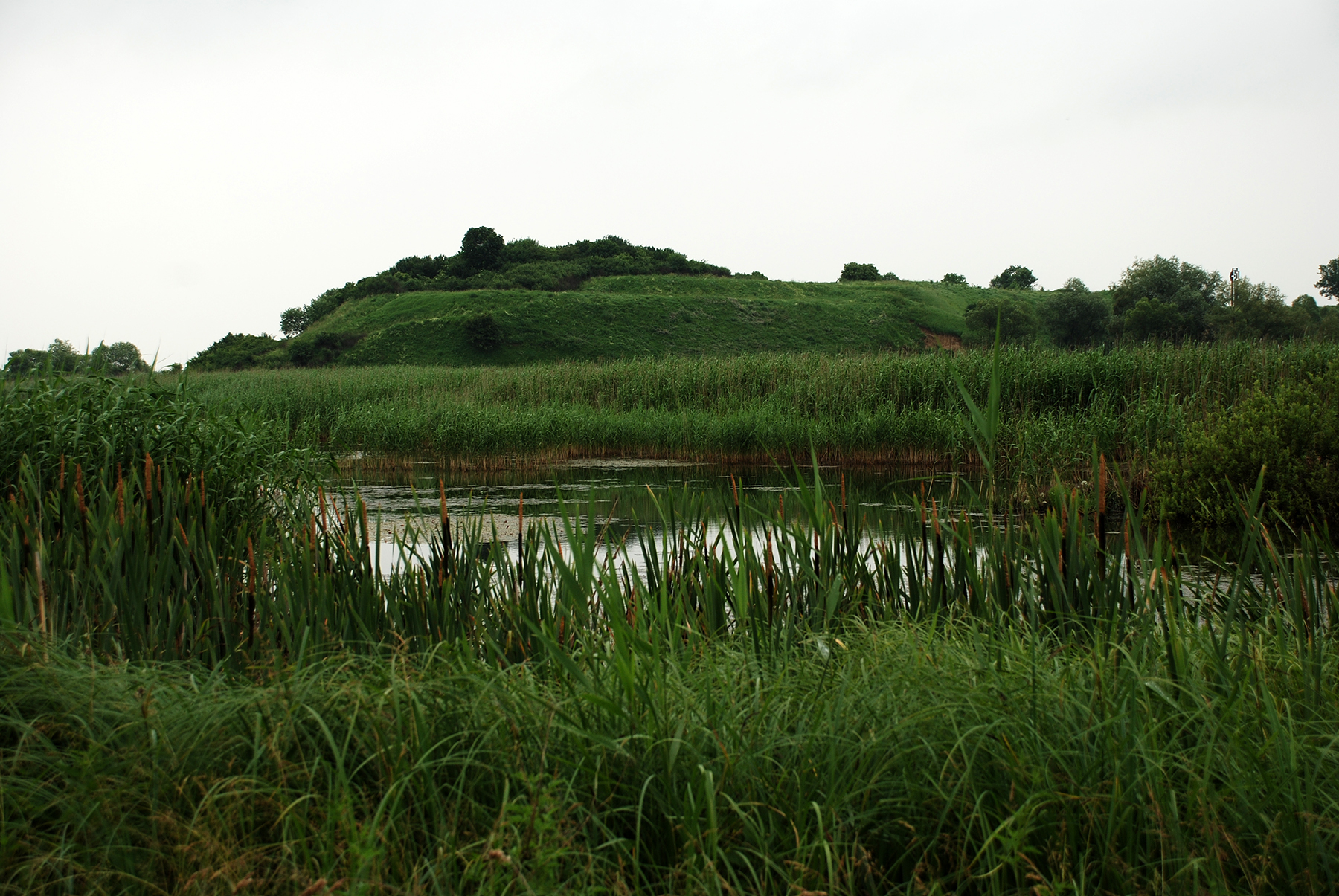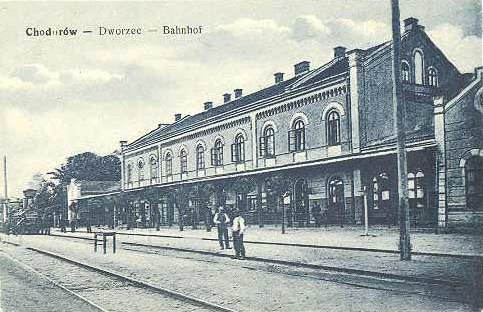|
127th Rifle Division (May 1943 Formation)
The May 1943 formation of the 127th Rifle Division was an infantry division of the Red Army, the third unit to bear the designation during World War II. History The 127th Rifle Division was formed on 10 May 1943 from the 52nd and 98th Separate Rifle Brigades, part of the 28th Army of the Southern Front. The division included the 547th, 549th, and 555th Rifle Regiments, the 1034th Artillery Regiment, and smaller elements, reusing the numbers of previous formations of the 127th. Colonel Fyodor Maximovich Rukhlenko, deputy commander of the 315th Rifle Division, was appointed commander. On 6 August, for "making a false report on the combat actions of the division," Rukhlenko was relieved of command. The division was part of the 28th Army on 9 August when Colonel Margazian Galliulovich Krymov, commander of the 387th Rifle Division of the army, transferred to command it. The division went on the offensive against the German fortified Mius-Front on 24 August in the region of Sau ... [...More Info...] [...Related Items...] OR: [Wikipedia] [Google] [Baidu] |
Soviet Union
The Soviet Union,. officially the Union of Soviet Socialist Republics. (USSR),. was a transcontinental country that spanned much of Eurasia from 1922 to 1991. A flagship communist state, it was nominally a federal union of fifteen national republics; in practice, both its government and its economy were highly centralized until its final years. It was a one-party state governed by the Communist Party of the Soviet Union, with the city of Moscow serving as its capital as well as that of its largest and most populous republic: the Russian SFSR. Other major cities included Leningrad (Russian SFSR), Kiev (Ukrainian SSR), Minsk ( Byelorussian SSR), Tashkent (Uzbek SSR), Alma-Ata (Kazakh SSR), and Novosibirsk (Russian SFSR). It was the largest country in the world, covering over and spanning eleven time zones. The country's roots lay in the October Revolution of 1917, when the Bolsheviks, under the leadership of Vladimir Lenin, overthrew the Russian Provisional Government ... [...More Info...] [...Related Items...] OR: [Wikipedia] [Google] [Baidu] |
Kiev
Kyiv, also spelled Kiev, is the capital and most populous city of Ukraine. It is in north-central Ukraine along the Dnieper, Dnieper River. As of 1 January 2021, its population was 2,962,180, making Kyiv the List of European cities by population within city limits, seventh-most populous city in Europe. Kyiv is an important industrial, scientific, educational, and cultural center in Eastern Europe. It is home to many High tech, high-tech industries, higher education institutions, and historical landmarks. The city has an extensive system of Transport in Kyiv, public transport and infrastructure, including the Kyiv Metro. The city's name is said to derive from the name of Kyi, one of its four legendary founders. During History of Kyiv, its history, Kyiv, one of the oldest cities in Eastern Europe, passed through several stages of prominence and obscurity. The city probably existed as a commercial center as early as the 5th century. A Slavs, Slavic settlement on the great trade ... [...More Info...] [...Related Items...] OR: [Wikipedia] [Google] [Baidu] |
Banderites
A Banderite or BanderoviteAlso referred to as ''Banderivets'', ''Banderovets'', ''Banderovtsy'', ''Benderovets'', ''Banderite'', ''Bandera'', or ''Banderlog''. ( uk, ą▒ą░ąĮą┤ąĄčĆč¢ą▓ąĄčåčī, bandąĄrivets; pl, Banderowiec; russian: ą▒ą░ąĮą┤ąĄčĆąŠą▓ąĄčå, bandąĄrovets) was a member of OUN-B, a faction of the Organization of Ukrainian Nationalists, nicknamed "Bandera's people". The term, used from late 1940 onward, derives from the name of Stepan Bandera (1909ŌĆō1959), head of this faction of the OUN. Because of the brutality utilized by OUN-B members, the colloquial term Banderites quickly earned a negative connotation, particularly among Poles and Jews. By 1942, the expression was well-known and frequently used in western Ukraine to describe the Ukrainian Insurgent Army partisans, OUN-B members or any other Ukrainian perpetrators. The OUN-B, had been engaged in various atrocities, including murder of civilians, most of whom were ethnic Poles, Jews and Romani people. Bandera was no ... [...More Info...] [...Related Items...] OR: [Wikipedia] [Google] [Baidu] |
Zhidachov
Zhydachiv ( uk, ą¢ąĖą┤ą░čćč¢ą▓) is a city in Stryi Raion, Lviv Oblast ( region) in western Ukraine. It hosts the administration of Zhydachiv urban hromada, one of the hromadas of Ukraine. Local government is administered by the Zhydachivska city council. Its population is approximately . Zhydachiv lies on the Stryi River. It has two schools and one Ukrainian gymnasium. Name The city has historically had numerous name variants, reflecting its complex past, including pl, ┼╗ydacz├│w and yi, ū¢ūÖūōūÖūśū®ūĢūæ (''Zidichov''). It was mentioned for the first time in 1164 under the name ''Udech''. In documents from the 14th to 17th centuries, the city was referred to as Zudech, Zudachiv, Sudachiv, Zidachiv, Sidachiv, Zudechev and more. History The first written mention of the city dates from the year 1164. At that time the city was part of Galician Rus' and was an important trade center at the confluence of the river Stryi in Dniester with a stone church of St. Nicholas. Then ca ... [...More Info...] [...Related Items...] OR: [Wikipedia] [Google] [Baidu] |
Khodoriv
Khodoriv ( uk, ąźąŠą┤ąŠčĆč¢ą▓; pl, Chodor├│w) is a city in Stryi Raion, Lviv Oblast of western Ukraine. It hosts the administration of Khodoriv urban hromada, one of the hromadas of Ukraine. Its population is approximately . The city was first mentioned in 1394. In many historic documents it is referred to as ''Khodoriv-stav''. In many documents it is named Khodoriv-stav. It is connected with a male name Fedir and the situation of the town above a big lake. In the 15th century, Khodoriv was granted city status and a coat of arms. Khodoriv was one of the major industrial hubs in Zhydachiv Raion and Lviv Oblast, with more than 10 manufacturing and other plants including the Sugar Plant and the Plant of Manufacturing Polygraph Machines. Within the city, there are three secondary education schools and two colleges. The city also has some monuments of architecture, including the St. Michael's Church. In addition, new church will rise in early 2000s, designed by Oleksandr Matviiv. ... [...More Info...] [...Related Items...] OR: [Wikipedia] [Google] [Baidu] |
Rohatyn
Rohatyn ( uk, ąĀąŠą│ą░čéąĖąĮ, pl, Rohatyn) is a city located on the Hnyla Lypa River in Ivano-Frankivsk Raion, Ivano-Frankivsk Oblast, in western Ukraine. It hosts the administration of Rohatyn urban hromada, one of the hromadas of Ukraine. Population: . Prior to World War II the town was located in Poland. Name It was first mentioned in historical documents in 1184 as a part of the Kingdom of GaliciaŌĆōVolhynia. Its name seems to be derived from Ruthenia, the name of the region of the location. However, the town emblem has a horn of a deer which gives the first part of the Slavic name of Rohatyn or Rogatyn ŌĆō "Rog" ("Horn"). The second part "Tyn" can be connected with a word which means " Stacket". Together these two words give us "Horn Stacket". Also, there is a legend connected with the image of the deer horn of the town emblem. It is said that a wife of the Duke Jaroslav Osmomysl, being lost in a forest, met a deer. She survived by following the deer out of the forest. A ... [...More Info...] [...Related Items...] OR: [Wikipedia] [Google] [Baidu] |
Berezhany
Berezhany ( uk, ąæąĄčĆąĄąČą░ąĮąĖ, ; pl, Brze┼╝any; yi, ūæū©ūóū¢ū®ūÉųĘū¤, Brezhan; he, ūæų╝ū¢'ūÖū¢'ūÉūĀūÖ/ūæų╝ū¢'ū¢'ūĀūÖ ''Bzhezhani''/''Bzhizhani'') is a city in Ternopil Raion, Ternopil Oblast (province) of western Ukraine. It lies about from the oblast capital, Ternopil. The city is about above sea level. The yearly temperature in Berezhany ranges from in winter to in summer. Berezhany hosts the administration of Berezhany urban hromada, one of the hromadas of Ukraine. Population: History The first written mention of Berezhany dates from 1374, when the village was granted by the Governor of Galicia and Lodomeria Vladislaus II to Ruthenian boyar Vas'ko Teptukhovych. Shortly afterwards, in the 14th century it became a part of Poland and became the property of a noble family from Buchach ŌĆö members House of Buczacki, later Sieniawa. As Miko┼éaj Sieniawski, a notable Polish military commander and politician envisioned a seat of his family there, on March 19, 1530, Kin ... [...More Info...] [...Related Items...] OR: [Wikipedia] [Google] [Baidu] |
Order Of The Red Banner
The Order of the Red Banner (russian: ą×čĆą┤ąĄąĮ ąÜčĆą░čüąĮąŠą│ąŠ ąŚąĮą░ą╝ąĄąĮąĖ, Orden Krasnogo Znameni) was the first Soviet military decoration. The Order was established on 16 September 1918, during the Russian Civil War by decree of the All-Russian Central Executive Committee. It was the highest award of Soviet Russia, subsequently the Soviet Union, until the Order of Lenin was established in 1930. Recipients were recognised for extraordinary heroism, dedication, and courage demonstrated on the battlefield. The Order was awarded to individuals as well as to military units, cities, ships, political and social organizations, and state enterprises. In later years, it was also awarded on the twentieth and again on the thirtieth anniversary of military, police, or state security service without requiring participation in combat (the "Long Service Award" variant). Award history The Russian Order of the Red Banner was established during the Russian Civil War by decree of the ... [...More Info...] [...Related Items...] OR: [Wikipedia] [Google] [Baidu] |
Proskurov
Khmelnytskyi ( uk, ąźą╝ąĄą╗čīąĮąĖ╠üčåčīą║ąĖą╣, Khmelnytskyi, ), until 1954 Proskuriv ( uk, ą¤čĆąŠčüą║čā╠üčĆč¢ą▓, links=no ), is a city in western Ukraine, the administrative center for Khmelnytskyi Oblast (region) and Khmelnytskyi Raion (district). It hosts the administration of the Khmelnytskyi urban hromada. Khmelnytskyi is located in the historic region of Podolia on the banks of the Buh River. The city received its current local government designation in 1941. The current city's population is estimated , making it the second largest city of the former, archaic Podolia region after Vinnytsia and the largest city of the western part of the region. History The city foundation date is uncertain. The territory, where Khmelnytskyi is situated, has been inhabited for a very long time. Many archaeological discoveries have been made in the city suburbs. For example, to the East of Lezneve district, there was a settlement from the Bronze Age 2000 B.C., and from Scythian times fro ... [...More Info...] [...Related Items...] OR: [Wikipedia] [Google] [Baidu] |
99th Rifle Division (Soviet Union)
The 99th Rifle Division (Russian: 99-čÅ čüčéčĆąĄą╗ą║ąŠą▓ą░čÅ ą┤ąĖą▓ąĖąĘąĖčÅ ''99-ya strelkovaya diviziya'') was an infantry division of the Soviet Union's Red Army which fought in World War II. It was first formed in 1924, destroyed, reformed and raised to Guards status, and then reformed once again. First formation It was first formed in April 1924 at Cherkassy in the Ural MD on the basis of the 44th Rifle Division as the 99th (territorial) Rifle Division. In 1926 it consisted of the 295th, 296th, and 297th Rifle Regiments. In 1931 it was translated(transferred) on a personnel basis. In 1939 it took part in the Soviet invasion of Poland as part of the 13th Rifle Corps, 12th Army, Ukrainian Front. On 29 September 1939 the division entered Przemy┼øl. Recognised as one of the best divisions in the Army under Andrey Vlasov's command in 1940. On 22 June 1941 it was serving with 8th Rifle Corps, 26th Army, Southwestern Front, and participated in a counterstroke at Przemy┼øl (ą¤ą ... [...More Info...] [...Related Items...] OR: [Wikipedia] [Google] [Baidu] |
.jpg)




